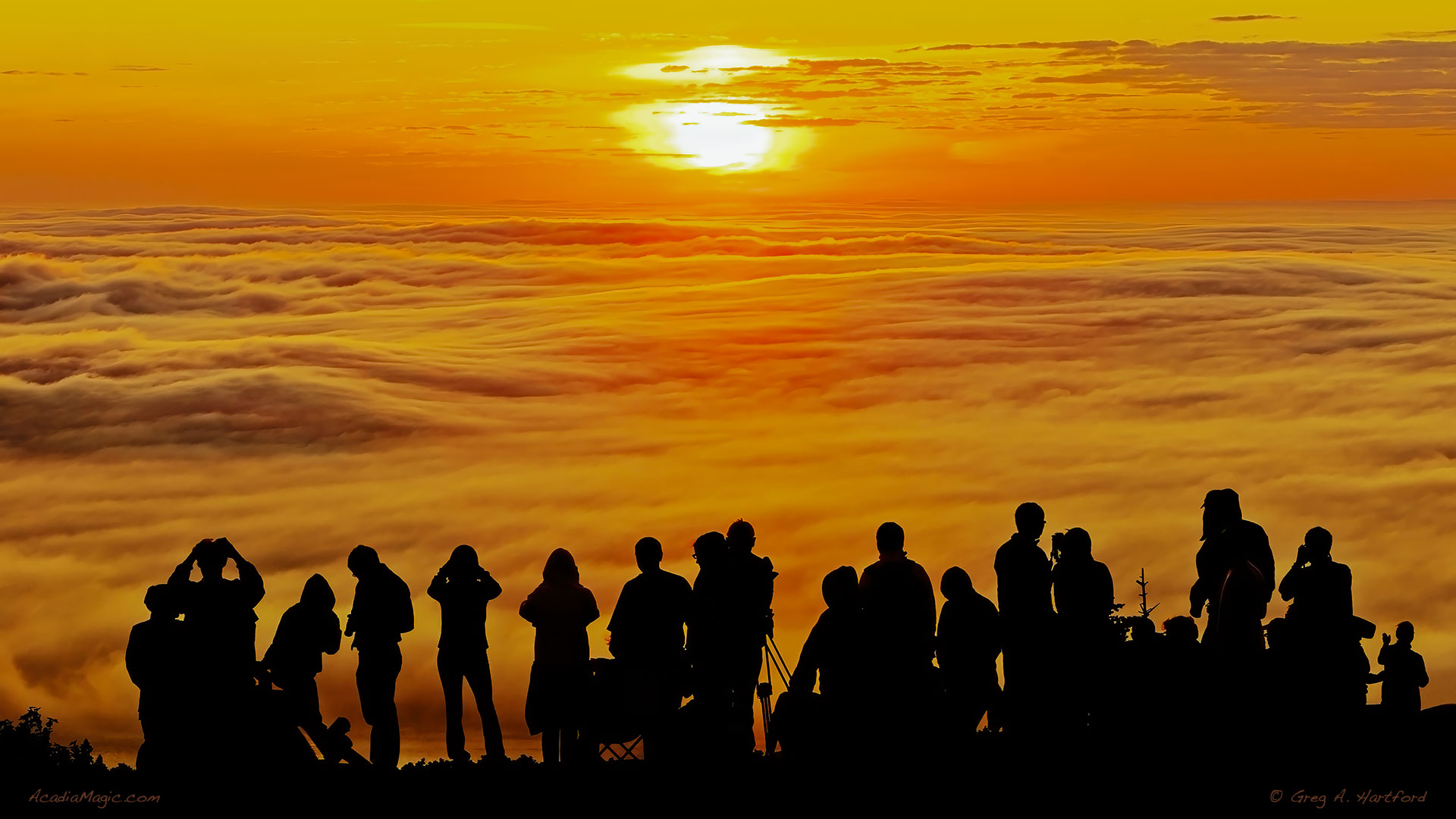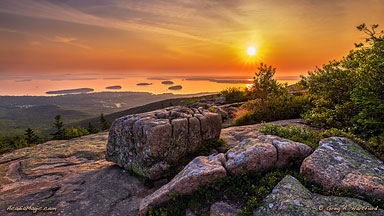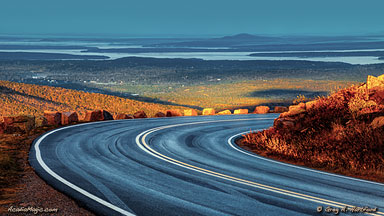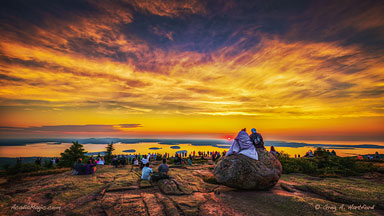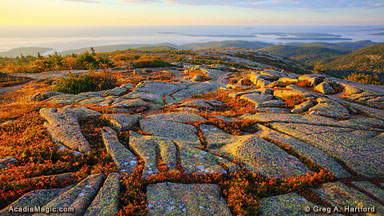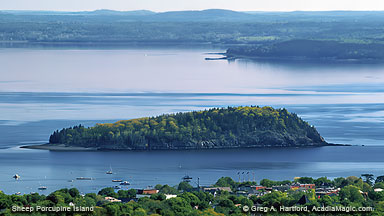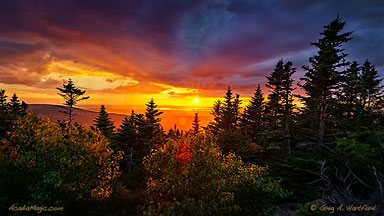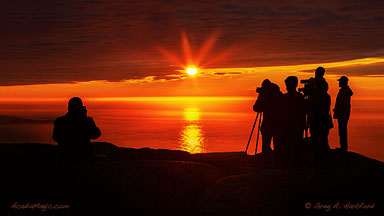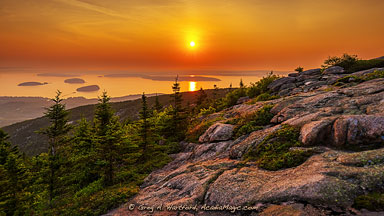Coastal Location
Cadillac Mountain is in Bar Harbor, Maine, a popular coastal resort known for its unique blend of a Down East fishing village with quiet community charm. The town's shopping district can easily be seen from the eastern side of the mountain and is particularly striking to view when there is a large cruise ship in the harbor. Cadillac Mountain is by far the most dominant land feature on MDI and for many miles along the Maine coast. As one would expect, most activities and businesses revolve around the ocean and the park itself. During normal season, there is a free shuttle bus service available that connects most important points on Mount Desert Island as well as to a few on the mainland.
